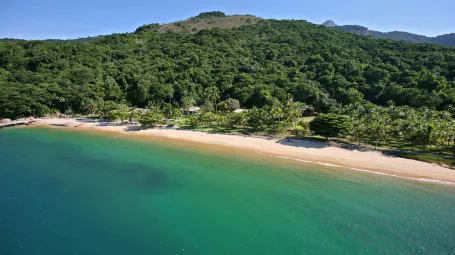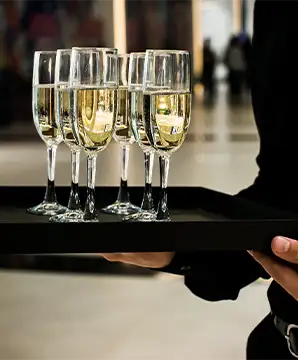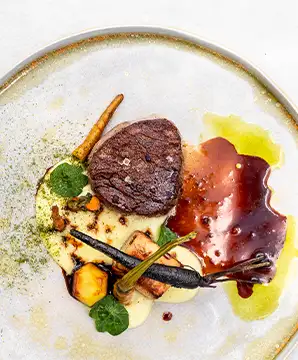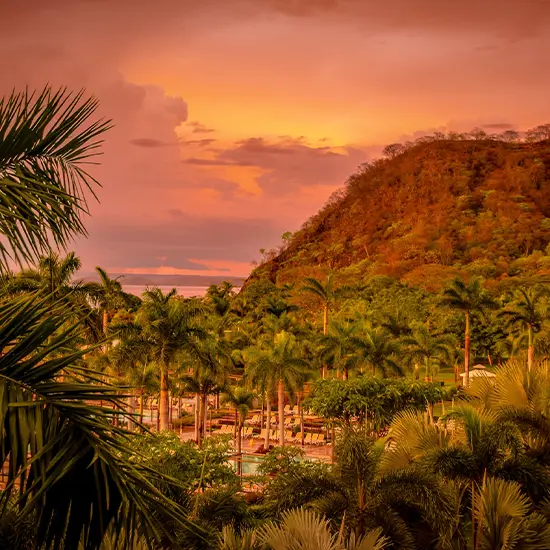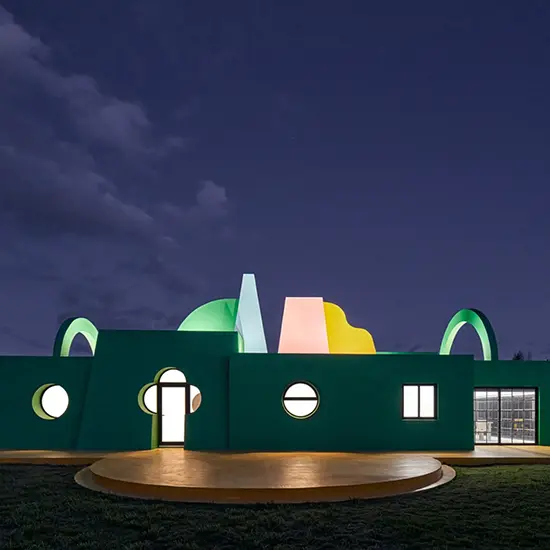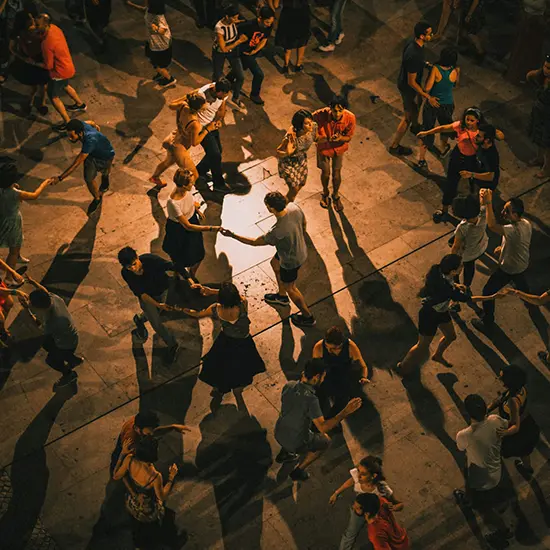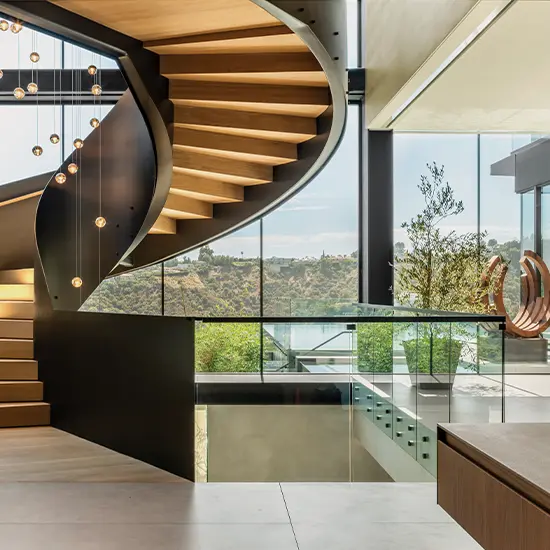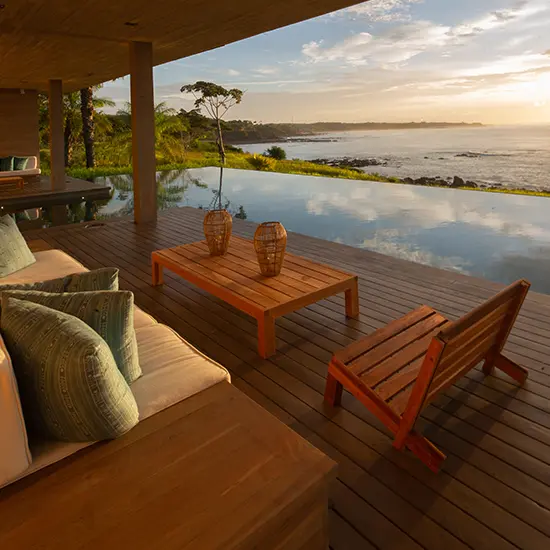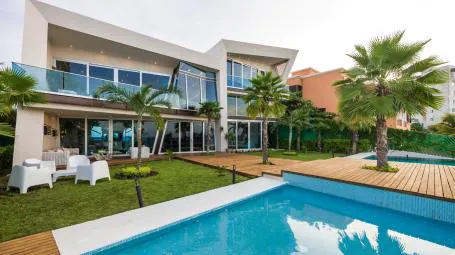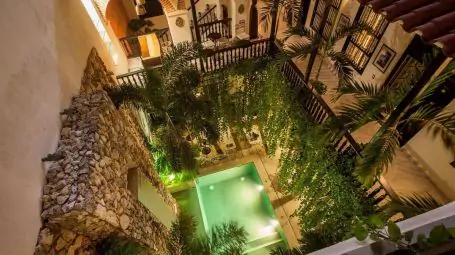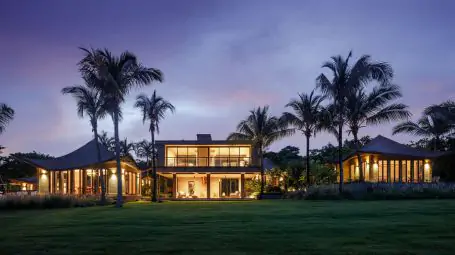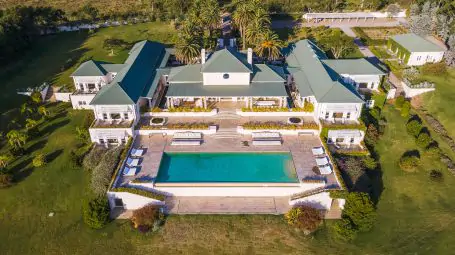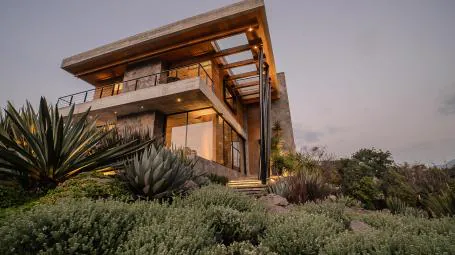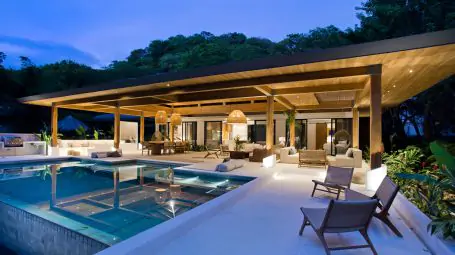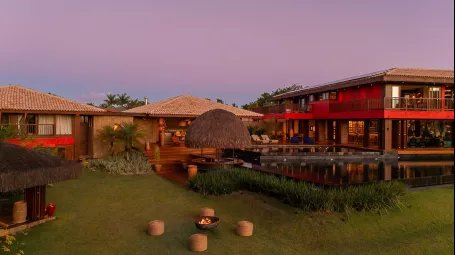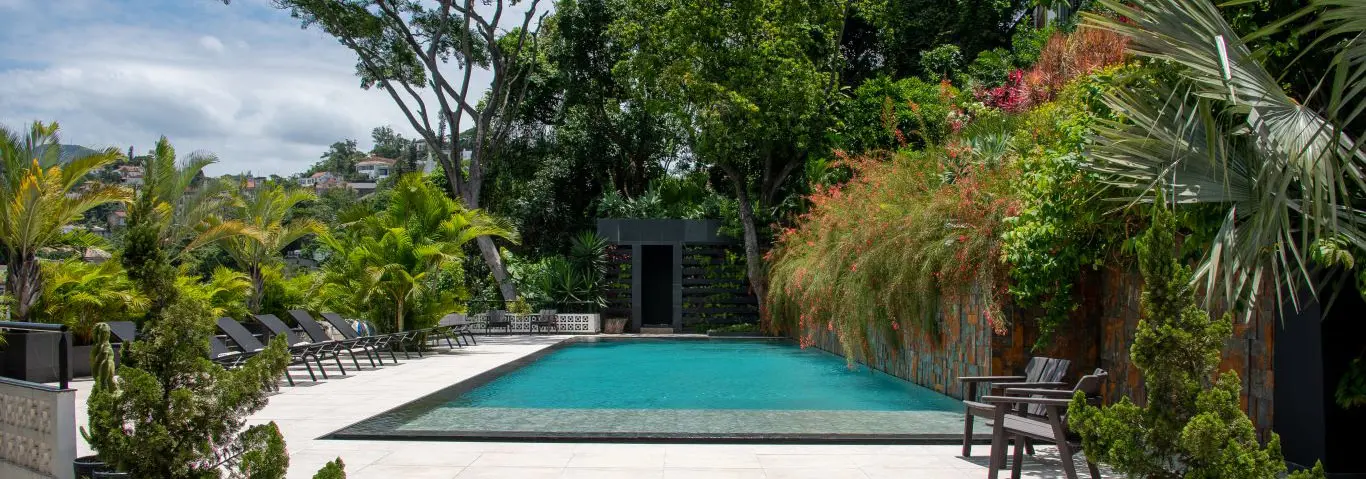
Rio de Janeiro
Luxury Villa Rental Rio de Janeiro
LVH is the preeminent super home chartering company in Rio de Janeiro offering ultra-luxury homes in hundreds of global destinations. Each home in our collection is carefully curated to deliver the highest standard of quality, and comes complete with a full-time steward, housekeeping & concierge access.
Our team will orchestrate the entire experience in Rio de Janeiro including in-home services, daily activities and travel logistics. LVH Domus, our invite-only membership, brings the same level of service to every day of your life. Endless possibilities await the most discerning families.
Included Services
Every detail of your stay has been meticulously considered; each luxury home has a dedicated on-site team, including a steward, housekeeping staff, and field manager.

Additional Services
To further elevate your stay, we offer additional services that include an on-site chef, pre-arranged chartered flights and yachts, access to exclusive establishments and events, and tailored experience packages.
Who We Are
KNOWLEDGEABLE
Experts in the demanding fields of luxury home charters, service, and global luxury lifestyle and home management.
ELITE
Confident in the quality of what we do and focused on the unique needs of an elite echelon of society.
DISCREET
Perceptive judges of conduct, tact and when to preserve appropriate silence preserving your privacy and safety.
SOPHISTICATED
Culturally discerning with refined elegant tastes that offers access to the world’s most rare elevated experiences.
Related Articles
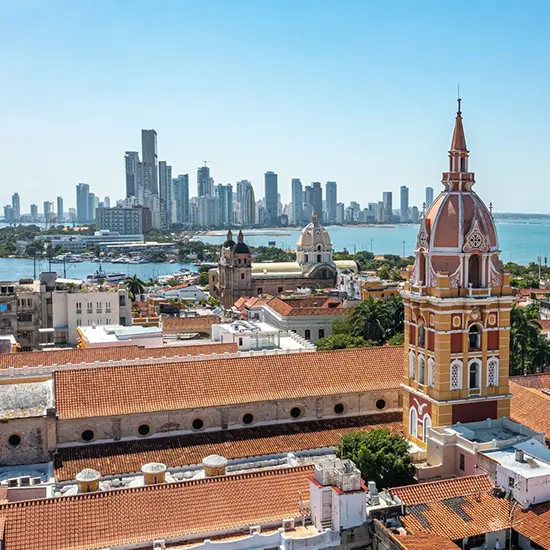
The Best Bites in Cartagena

The Evolution of Golf Fashion
Discover Rio de Janeiro
A city that needs no introduction, Rio de Janeiro immediately evokes images of golden beaches, lush tropical mountainscapes, and wild nightlife. The extraordinary energy of Rio is second to none, offering a breadth of luxury experiences as colorful and diverse as its residents. A kaleidoscopic mix of cultures and influences has made this city the universal symbol of Joie de Vivre and unfettered hedonism. Its eternal title as the "Marvelous City" is no overstatement between its larger-than-life panoramic vistas, glamorous beaches, and spellbinding natural reaches. Seductive, chaotic, and extraordinary, the streets of this megalopolis offer every shade of exhilaration. From the infectious beats of Samba to the chic detachment of Bossanova, the carioca way of life needs to be experienced to be believed.
The dedicated LVH team ensures all guests receive the ultimate in service and satisfaction during their stays. LVH can arrange for private chefs, private jets, exotic cars, luxury yachts, and anything else you might require to make your vacation stay truly remarkable. Choose a one-on-one session with a certified yoga or pilates instructor, time with a private tennis pro to up your game, or complete pampering sessions with a massage therapist, hair stylist or barber, nail technician, and makeup artist.
Luxury home rentals, with full services and support, can be arranged to accommodate groups of varying sizes and are ideal for lavish events. A wide roster of specially curated properties makes up the list of the world’s most exquisite vacation estates. No matter what your chosen destination, when you are seeking the best homes, you have the most elite selection from which to choose when booking your stay with LVH.
AREAS
Cariocas refer to Rio neighborhoods as “bairros.” These communities make up zones or “zonas” and Rio is categorized into four such zones – north, south, east and west zones.
CENTRO
Rio's downtown may lack the allure of the beaches, but there's plenty here to merit a visit. The city’s oldest streets can be found here, along with the best museums and galleries located in Centro. The most notable of these – Centro Cultural Banco do Brasil (CCBB) – hosts big-name visiting exhibitions as well as regular free cinema screenings for children, while the grand, golden-domed Teatro Municipal showcases ballet and opera. Some of the city's oldest buildings are found here, too like elegant neo-classical churches and handsome colonial homes among the office tower blocks dominating the skyline.
LAPA
Less than a decade ago, downtown Lapa was virtually a no-go area for tourists, with its crumbling historic buildings home to less than wholesome nightspots. Today, the area has been given a new lease on life, and Lapa is the liveliest nightlife location in the city. Lapa lies at the heart of the historic center, and buildings here are some of the oldest. Rua da Lavradio is a street flanked by tall, handsome colonial buildings, most of which now function as antique stores or bar restaurants. Nightlife in Lapa is also a trend – colorful, varied and as vibrant as ever. Nearby, the Arcos da Lapa (Lapa Arches) are an eye-catching former aqueduct and an iconic image of bohemian Rio.
SANTA TERESA
There's more to Rio de Janeiro than beaches, and this leafy neighborhood that clings to the jungle-clad hillside above the city is well worth sacrificing the sun lounger for. Known as the artistic heart of Rio, Santa Teresa's cobbled streets are lined with rambling mansions once home to the city's wealthy elite and today function as artists' studios, restaurants, and guest houses. Santa Teresa's breezy hilltop location made it the destination of choice for wealthy settlers, and the neighborhood's cobbled streets are lined with some of the finest examples of colonial architecture anywhere in the city. Just strolling around the neighborhood is a pleasure in itself, and the views offered from many guesthouses and restaurants are nothing short of spectacular. Be sure to pay a visit to Parque das Ruinas, a small park housing a ruined mansion home with terrific 360-degree views from the top floor. Discover the magic of Rio’s urban oasis with the majestic Villa Paranagua, a majestic residence commanding extraordinary views over Guanabara Bay. Exotic tropical vegetation embraces the spacious property perpetually bathed in golden light, making up a luxuriant paradise at short notice from the city's exhilarating downtown core.
FLAMENGO
Flamengo is found between Botafogo and Centro. The name has two origins, according to legends. One story claims the name was given because of the large population of pink birds during colonial times, while another common theory points to the time when Flemish prisoners of war were brought here during the 1700s. Flamengo is famous for its taverns, museums, and its special Flamengo park, designed and built by Lota de Macedo Soares in 1965. Its gardens were conceptualized and manicured to perfection by the famous Burle Marx. The park’s official title is “Parque Brigadeiro Eduardo Gomes,” but everybody knows it as the Aterro do Flamengo or simply “Aterro.” It is the largest park in the city, covering 1.2 million square meters reclaimed from Guanabara Bay. The neighborhood also houses the Carmen Miranda Museum, the Modern Art Museum, and the Monument to the World War II Dead Soldiers.
BOTAFOGO
Botafogo and Flamengo are sandwiched between the centro and south zone. It is an upper-middle-class area, home to lively nightlife and some fabulous restaurants, and it is within easy reach of famous beaches. Despite its countless condominiums and apparent contemporary appearance, Botafogo is rich in culture and history. Since it’s surrounded by the mounds of Mundo Novo, Dona Marta, and the hills Morro de São João, climbing to Mirante do Pasmado point offers a panoramic picture of Botafogo. The best time to hike is at the crack of dawn when the first rays of sun sweep over Rio and at sundown when buildings light up.
URCA
Urca is a gentile neighborhood at the foot of the Sugar Loaf Mountains. These mountains are one of Rio’s most prominent tourist destinations, found in the charming city of Urca. The Sugar Loaf Mountains give tourists an amazing view of other attractions, such as the Niteroi Bridge, Flamengo Park, and the Bay of Botafogo. Despite its big-name attraction, Urca remains pleasingly free of high-rise hotels and is home to handsome historical buildings. Cable cars make the dizzying ascent from the base in Urca itself, stopping first at the smaller Morro da Urca before climbing to Sugar Loaf's peak. At the same time, those with substantial stamina can take a mountain trail up to the first cable car station. Some of the most celebrated personalities in entertainment history had their roots in Urca. It may as well be called the birthplace of stars.’ Roberto Carlos (considered the Elvis Presley of Brazil), and late entertainer Carmen Miranda.
COPACABANA
Copacabana, along with Ipanema, is perhaps Rio’s most popular destination. Although its beach in the south only stretches to four kilometers, the density of people, hotels, kiosks, restaurants, and bars is off the charts. Fort de Copacabana, meanwhile, was a former infantry fortress starting in 1908 but has since been converted as a venue for cultural events. Bairro Peixoto, a smaller enclave, offers an easy escape from the hustle and bustle of Copacabana. It’s a small neighborhood with neo-colonial buildings no more than four stories high. Tall trees dot the streets, providing a much-needed canopy. Fisherman’s Corner gives a glimpse of the old way of living in Copacabana when fishing was the main livelihood. Historic hotel, The Copacabana Palace, is one of the oldest and most famous.
JARDIM BOTÂNICO
Leafy, tranquil, sedate … these are not words commonly associated with Rio, but all apply to the scenic upper-class residential neighborhood of Jardim Botanico. Most famous for the verdant Botanical Gardens, after which the bairro is named, Jardim Botanico is also home to many excellent restaurants. The renowned Botanical Gardens offer the opportunity for visitors to take things down a pace and spend a few hours strolling under the shade of towering imperial palms, admiring the fascinating flora and fauna. Keep an eye out for monkeys, parrots, toucans and brightly colored butterflies.
IPANEMA
The 1960s classic bossa nova tune Girl from Ipanema, contributed greatly to the current name recall of this neighborhood. Streets here are very organized and classified by a grid system, so it’s not easy to get lost. The first thing that comes to mind with Ipanema is the beach, but there are art houses, a university, cafés, and retail shops here as well. Formal dining venues are well-established. A walking distance from the beach is the “Galeria de Arte Ipanema,” mostly displaying works of modern artists. Bolte de Arte is also here as well as The Amsterdam Sauer Museum, named after Frenchman Roger Sauer, a famous jeweler and gem expert who chose to spend most of his life in Rio. You can see his rare collections on exhibit, like Brazilian opal and topaz stones endemic to Brazil. The trendiest boutiques and clothing stores are said to have branches in Ipanema. Most of them are concentrated on Visconde de Piraja. So, the Ipanema neighborhood is one of the trendiest and most luxurious in which to spend your vacation time.
LEBLON
Leblon is bordered by its more famous neighbor, Ipanema. But in terms of what it can offer, the neighborhood should not be underestimated. It is considered, in fact, the wealthiest district. Separated from Ipanema by a narrow canal, its beaches are similar to Ipanema’s, only more exclusive. Clean, white sand and beautiful people clad in branded swimsuits and beachwear make walking around the coastline an uplifting experience. During the evening, swathed by the nightlights, you can watch performers of the famous “Capoeira,” Brazil’s contribution to martial arts.
SAO CONRADO
For upscale living, Sao Conrado – apart from Leblon and Tijuca – is another good place to visit. The whole neighborhood is filled with classy restaurants, chic, modern buildings, and nightlife that reminds you of the parties during Carnival week. This cosmopolitan neighborhood is home to the mayor and other prominent personalities. As for some other social aspects, the neighborhood–namely the San Conrado beach–is the top spot for extreme sports like hang gliding and paragliding.
GAVEA
Gavea is an upscale neighborhood set in the southern district. Here you can find residences of celebrities, musicians, sports superstars, and other famous personalities. In essence, this is Rio’s version of Beverly Hills. Despite being an affluent neighborhood, it’s a favorite destination of locals and tourists as it is home to many cultural attractions. For sports fans, this is the headquarters of Flamengo, Rio’s soccer team. You can find historical landmarks like the Museu Historico da Cidade, and the Instituto Moreira Salles, with its veritable feast of 80,000 photographs narrating Rio’s history. A welcome oasis in the middle of posh mansions and ancient buildings is Parque da Cidade. And lastly, Hipodromo da Gavea. Races are held on Mondays and Fridays, so mark your calendar and choose your winning mare!
BARRA DA TIJUCA
To the southwest, you can find the youngest neighborhood, the Barra da Tijuca. Although it’s quite a ride away from downtown, beaches here are truly world-class and not as packed as the ones in Ipanema or Copacabana. The neighborhood hosts the biggest convention center and the largest shopping mall in Latin America. There are no supermarkets here, just hypermarkets. The beach coastline also stretches 18 kilometers across. The rich and famous typically own beach houses and condominiums here.
BEACH CLUBS
With an incredible coastline, Rio offers some of the best beaches and beach clubs catering to different styles and moods. From trendy and new to relaxed and casual. From the sunny shores of Ipanema to the famous nightlife at Copacabana, you’ll find that Rio is brimming with trendy hotspots along the beach where you can enjoy a sunset over the ocean or simply sip a craft cocktail with your toes in the sand.
GUARDERYA BEACH CLUB
Guarderya Beach Club is a unique place surrounded by luscious greenery and the beautiful coast of Guanabara Bay with access to a small private beach. The result of hard work and dedication, the space is the right choice to experience unforgettable moments. On Sundays, the beach club elevates the mood of its guests thanks to hosting regular live music events ranging from rock n' roll, MPB, and pop rock with DJ interludes.
YNDU BEACH LOUNGE
Yndú Beach Lounge almost feels more like a bohemian cabana than a beach bar, and fits perfectly with the overall atmosphere of Rio. Laidback, relaxed, and casual are vibes you can expect here. During the day, the venue hosts a yoga class and DJs come to spin tunes on the weekend, serving rounds of Carioca’s favorite caipirinhas, so things do get a little heated once the sun goes down.
QUIOSQUE ATLANTICO
Rio's best beach bar is tucked away on a quiet stretch of sand down from where the kite surfers hang out on Barra Beach. Hundreds of wooden kiosks line the city's famous shoreline and while good for a fresh coconut or ice-cold beer, they aren't inspiring lunch venues. However, that is not the case with Tato Giovannoni’s, Argentina's master mixologist’s, foodie beach bar. With its bright-red façade and simple wooden tables set in the sand, it still channels an unpretentious seaside vibe while serving truly fabulous food: creamy shrimp bolinhos and grilled cheese smartened up with criollo salsa. Giovannoni mixes superb açaí-spiced Bloody Marys and rosemary-and-grapefruit G&Ts using his own artisanal gin.
CLASSICO BEACH CLUB
Born on the beach and boardwalk of Barra da Tijuca, the Classic Beach Club was created as the meeting point for extreme sports lovers, friends and families, in a reserved atmosphere, with excellent music and cuisine. This beach bar is known far and wide and springs in several upscale and naturally mesmerizing locations around the city, from the hilly Urca, to sandy spots of Largo, Ipanema, Grumari and Barra de Tijuca. The Classico Beach Bar stands out for its sophistication without exaggeration and quality with simplicity.
RESTAURANTS
Fine dining establishments in Rio take in culinary influences from across the globe, mixing international roots with a uniquely Brazilian flavor. There's sophisticated sushi to be found at the elegant Sushi Leblon, while the two restaurants at Copacabana Palace hotel deliver a dining experience that is every bit as refined as one might expect. Less extravagant but still equally delightful is Aprazivel, nestled in the hilly Santa Teresa, where sophisticated French-Brazilian dishes are served in a gorgeous tropical garden, complete with straw-roofed gazebos, twinkling fairy lights and stunning views over downtown and across Guanabara Bay. Following is the list of unmissable upscale dining options in Rio.
TÉRÈZE | MODERN
Falling in love with Térèze is almost unquestionable, in part because of its beautiful views, bright picture windows, and the original tropical chic design created by the use of different demolition materials. This is to say nothing of its cuisine, which is both convincing and well-structured. The chef at the helm of the kitchen is Pedro Franco, who focuses on fresh, organic cooking with a strong contemporary twist. Meticulous presentations and some truly surprising flavors add to its appeal.
APRAZÍVEL | BRAZILIAN
Climb up an alley to the very top of Santa Teresa and you’ll stumble across this family-run restaurant surrounded by a lush tropical garden. Solid timber tables are set at various levels, and all boast views of the neighborhood itself and across to the city. The shady garden, with its soothing birdsong, provides a relaxing setting in which to sip one of the special cachaças and choose from a menu offering a whole host of delicious dishes. As described, “Aprazível makes harmony for every type of soul, delights in any type of meal, allows you to breathe a time of calm that no longer exists and, together with it, evoke nostalgic adjectives without pity: bucolic, airy, rococo, delectable and, ‘comme il faut"’ pleasant.”
KITCHEN ASIAN FOOD | ASIAN FUSION
This restaurant features a menu led by Chefs Pierre Landry and Nao Hara in a sophisticated atmosphere. It’s the fusion of Chinese, Thai, Malay and Indian ingredients and the meeting of two traditional cuisines: the French and its techniques, brought by Pierre Landry; and the Japanese, with refinement of raw materials from the sushi bar run by Nao Hara. These are the gastronomic differentials of the newest restaurant in Marina da Glória, Kitchen Asian Food. The Kitchen has a sophisticated and modern environment – a project by Architect Ivan Rezende. The restaurant offers a 300-square-meter veranda with a view, literally, of a postcard.
CORRIENTES 348 | ARGENTINIAN STEAKHOUSE
It was at number 348 of the bustling Rua Comendador Miguel Calfat, in the São Paulo neighborhood of Vila Olímpia, that the first Corrientes 348 restaurant appeared, hence the name. Its menu contains classic recipes with a contemporary touch, prepared with the best raw materials and a selection of prime meats, from the most prestigious regions and producers, resulting in cuts in the Buenos Aires style – tall, tender and juicy. At Corrientes, you'll find an excellent wine list, made up of reds and whites. This is an unforgettable gastronomic experience enjoyed in a pleasant environment.
JULIETA | FRENCH
Here is a contemporary French restaurant with a strong Brazilian accent, inside the Casa de Arte e Cultura Julieta de Serpa: a palazzo with a neo-classical façade and Louis XVI interiors. Silk curtains, paintings by famous artists, and live piano music on weekends make this space one of the most sophisticated in the city. Here, concerts and exhibits are regularly held to show the finer things in life. Dazzling features of bygone days are juxtaposed with contemporary dishes. The chefs develop menus that arouse a feeling of well-being and pleasure. Try the doce de leite petit gâteau, with pear ice cream.
LASAI * MICHELIN | BRAZILIAN
Lasai, a cosmopolitan restaurant owned by Chef Rafa Costa e Silva and his wife, Malena Cardiel, is unprecedented, vibrant, light, mature, and sensual. Using modern techniques and Brazilian ingredients grown in his own gardens and that of small farmers in Rio de Janeiro, Rafa creates dishes emphasizing vegetables without excluding the use of the freshest products from the sea and the best meats. Located in a historic building, this unique restaurant reflects the cutting-edge aspect of Brazilian cuisine. The name “Lasai” translates to “tranquil” in Basque, and is a nod to the years this chef worked with Andoni Luis Aduriz at Mugaritz in Spain.
OTEQUE ** MICHELINE | MODERN CUISINE
Oteque is the “carioca” project from Chef Alberto Landgraf, focusing on high-quality ingredients with an elegant yet casual service. Alberto and his team take inspiration from nature’s purity, aiming to express joy, beauty, and comfort in their dishes. Surprises here begin at the entrance since nothing gives the impression that hidden behind its discreet front door is this temple of gastronomy. The attractive dining room boasts high ceilings and an informal atmosphere with a modern-industrial feel. Landgraf’s delicate dishes showcase a skillful fusion of ingredients and flavors. If you’re looking for high-quality and fresh ingredients to balance your meals, there is no better place to go other than Michelin-starred Otequ!
LA VILLA | FRENCH
This French brasserie occupies a unique old building with lots of history. In the 1980s, when it was owned by Nelsinho Rodrigues, son of the famous playwright Nelson Rodrigues, it was a renowned meeting point for intellectuals. La Villa offers concise à la carte, two fixed-price menus and what it refers to as “Os domingos franco-brasileiros” on Sundays. Make sure you try the fantastic bouillabaisse: a delicious fish stew from the south of France and one of the restaurant’s signatures.
MR LAM | CHINESE
Excellent Chinese cuisine with a hint of cutting-edge mastery is on offer in this sumptuous modern mansion overlooking the Rodrigo de Freitas lagoon. The menu here was put together by a chef famous for culinary creations in restaurants in both New York and London. For Brazil, Mr. Lam has revived traditional recipes, including Peking duck and chicken satay, as well as created new and unusual dishes such as Uhn Ehggi (a passion fruit and coconut dessert in the shape of a fried egg). This is an experience full of surprises!
MEE * MICHELIN | PAN-ASIAN FUSION
If you’re looking for a unique Asian-inspired experience, make sure you book a table at Mee, where you can enjoy pan-Asian fusion cuisine featuring the flavors of Thailand, Cambodia, Vietnam, Korea, Japan, and elsewhere. Here you’ll find a sushi bar plus interesting menus, including one dedicated to the esteemed Michelin guide! Particularly striking are the Te portraits by Belgian artist Christian Develter, inspired by tattooed faces of women from the Chin tribe in Myanmar.
CIPRIANI * MICHELIN | ITALIAN
Inside the "Copa," the city's, and perhaps Brazil's, most legendary hotel, you’ll find Cipriani. Under the baton of Chef Nello Cassese, discover Italian-international cuisine showcasing contemporary techniques and presentation using authentic Italian products in combination with locally sourced ingredients. The splendid dining room overlooks the hotel's famous pool, but if you're looking for a unique experience, we recommend booking the chef's table seating six guests in the kitchen itself.
EMILE | INTERNATIONAL
Boasting a separate entrance to the Hotel Emiliano, this restaurant’s standout features are its lobby and a lush vertical garden in a patio-style area crowned by a retractable roof. The creative Chef Camilo Vanazzi uses French techniques with a bolder personality. His recipes have striking colors, a combination of textures, and incredible presentation, creating a mixture full of bossa, showcasing elevated attention to detail. Emile's menu values fresh, local ingredients carefully prepared by the talented team.
ORO **MICHELINE | CREATIVE
This restaurant opened its doors in 2010 and has become a reference for innovation and revolution in the Brazilian food scene. In its eight years, the restaurant has received Best Restaurant awards from several important publications. In 2015 Oro received one Michelin Star. The restaurant has most recently won three different categories at the Veja Rio Comer & Beber 2016 Awards: Chef of The Year, Best Contemporary Restaurant, and Best Sommelier. Artfully decorated dishes and an innovative experience await you at Oro, presided over by famed Brazilian Chef Felipe Bronze.
SUSHI LEBLON | JAPANESE
The first Japanese restaurant in the south zone, Sushi Leblon, opened its doors in September 1986. It is known for a mixture of tradition and innovation in its cuisine, cool atmosphere and has been awarded several times for being the best in town. A highlight of Rio's gastronomic scene, Sushi Leblon welcomes customers from all over the world, winning everyone over for its quality service, menu and décor. This highly popular sushi bar is the ideal place for tasting the magnificent white fish ussuzukuri (ultra-fine slices of sand perch, marinated in sake and lemon and scented with truffle oil) or delicious tuna with a sesame crust and citrus sauce.
LE BLOND | FRENCH & BRAZILIAN
This brasserie, part of the Troisgros group, a name associated with renowned chefs, attracts immediate attention thanks to its façade and then its interior, adorned with cooking utensils (pots, pans, frying pans, etc.) hanging overhead. Cuisine here, which combines French and Brazilian cooking–showcases strong technique, creativity, and the very best quality. The menu features a range of great classics, like shrimp risotto with truffle-flavored foam.
L'ETOILE | FRENCH
Here you will find a sophisticated, romantic, and very special restaurant that combines high-level cuisine with a stunning view of Rio from its 26th-floor setting. A la carte dining, influenced by French cuisine, is complemented by two set menus: one known as L'Etoile, and the other a more elaborate tasting-style menu offering the option of combining different dishes.
SHISO | JAPANESE
Shiso Restaurant provides a pleasant journey through oriental culture. Perfect for enjoying an intimate dinner with more striking flavors, in a sophisticated environment, with special drinks made from Japanese beverages. Named after an edible leaf, this restaurant is a good option if you’re looking for Japanese cuisine with a modern twist and a focus on top locally sourced ingredients. The interesting space was designed by Arthur Casas, one of Brazil’s most intriguing and creative contemporary architects. Traditional sushi and sashimi are accompanied by a selection of grilled dishes, forming an integral part of the menu.
NIGHTLIFE
From the hedonistic revelry of Carnival to the city's massive New Year's celebrations, Rio loves nothing better than to let loose! The city's famous party spirit is everywhere and nightclubs are both abundant and lively. From downtown Lapa, out to the sprawling modern neighborhood of Barra, from Samba and Bossa Nova to Hip Hop, Jazz, and Electro take your pick for painting this ‘multicolored’ town red! Most of Rio's plush bars and clubs are concentrated in the well-heeled neighborhoods of Ipanema, Leblon, and Barra da Tijuca. Some of Rio's most luxurious bars can be found within the city's five-star hotels and mostly on the hotel rooftops. If you want to dance, Rio's upscale bars and nightclubs won't disappoint!
DECK BAR H NITEROI
This rooftop is not located in Rio city, but in Niterói across Guanabara Bay, connected with the Rio-Niterói Bridge. Equipped with both a stylish bar and lounge area, as well as a fantastic rooftop infinity pool, the H Niteroi rooftop terrace is an exclusive oasis for guests staying at the hotel during the day, but at night it is open to all. Enjoy amazing views over the ocean, as well as a menu filled with light dishes and excellent drinks, served in a sophisticated rooftop lounge atmosphere.
BAR DOS DESCASADOS
Overlooking Santa Teresa, the Bar dos Descasados welcomes all who toast life! The place inspires romance with its incredible sunset views from its panoramic balcony. Indirect lighting, fine decoration, refinement, and variety of the place’s beverage menu offer an award-winning drink list referencing the neighborhood and honoring several artists who have stayed at the hotel.
MAMA SHELTER RIO DE JANEIRO | BAR
Led by the neighborhood’s lush vegetation and earthy colors, Mama’s architect, Jalil Amor, has created an airy, lively bar that encourages lingering. Kick back with a caipirinha, try a non-alcoholic cocktail or sample some fine wines. You can expect Mama’s signature homemade burgers, cocktails, and music sessions but also table football, ping-pong, brunch, and events. Mama’s restaurants are all about relaxed gatherings, lively get-togethers, and informal celebrations.
SELINA LAPA RIO ROOFTOP
Found in an old and charming building, the Selina Lapa Rio offers a rooftop experience quite different from many of the others. In the city center, views are not over the ocean and beaches but instead over the buildings in the trendy Lapa area. Open to all, the rooftop comes with a relaxing and vibrant atmosphere, where intimate shows, live DJs, and other events are all part of the weekly schedule. Enjoy straightforward but tasty menu items, serving classic cocktails, craft beers, and a selection of bar-style food.
XIAN LOUNGE
Swanky is the best way to describe Xian. Rio’s most exclusive Asian restaurant is known for its refined atmosphere, unforgettable dishes, and sweeping views over Guanabara Bay. While inside seating offers sea and city views, depending on which way you look, the bar and terrace deliver another level of rooftop bar experience with its comfortable, modern design and endless views of the vast Atlantic. An extensive wine and sake list are buoyed by a wide selection of beers and expertly mixed cocktails. While you don’t have to eat to book a table here (especially if you’re coming during the day for a quick tipple), giving the menu a look-over is heavily recommended - the sushi is among the best in the world outside of Japan!
SKY LEME | ROOFTOP BAR \
Perched on top of Novotel Rio de Janeiro Leme, Sky Leme is a coastal-chic, natural and elegant rooftop. Part lounge and part fantastic rooftop pool, the terrace comes surrounded by panoramic views over Leme, Copacabana Beaches, and the ocean. With the motto, “The Sky Is The Limit,” Sky Leme aims to provide an elevated experience out of the ordinary – from relaxing hours by the pool to beautiful sunsets and crafted signature cocktails, as well as nightly vibes and weekend DJs.
ISABEL LOUNGE | ROOFTOP BAR
Found on top of the Hilton Copacabana, 39 floors above Avenida Atlântica, the Isabel Lounge and rooftop terrace offer breathtaking views with the Sugarloaf Mountain, Christ the Redeemer and Copacabana beach all included in the vistas. Decorated with a boho-chic inspiration, the rooftop bar offers a menu filled with authentic and delicious cocktails and tasty Brazilian flavors – all served in a sophisticated yet cosmopolitan and bohemian atmosphere. By night, the rooftop bar offers a drink menu created by Alex Mesquita, with authentic and delicious cocktails prepared with Brazilian herbs and seeds, as well as a food menu by Chef Pablo Ferreyra, also including tasty Brazilian flavors and many dishes perfect for sharing.
PÉRGULA | POOLSIDE BAR
For the ultimate indulgent experience, head to the Pérgula – the elegant poolside restaurant at the enduringly elegant Copacabana Palace Hotel. Less formal than the hotel's fine-dining Italian restaurant, Cipriani, at Pérgula, you can dine in your (suitably stylish) swimwear and sarong. Watch beautiful people splash around in the pool as you sip champagne cocktails and dine on seafood and light pasta dishes, or head here for the famous breakfasts and brunches, including salmon and caviar washed down with a spot of bubbly.
DECK BAR AT PESTANA RIO | ROOFTOP BAR
Perched on the rooftop of the affluent Pestana Hotel, Deck Bar is an open-air bar that boasts one of the best views in Rio. Its high vantage point provides sweeping views over Leme and Copacabana that stretch across the endless ocean. On the weekends, live DJs play various sets including dance and electronic music, and the bar keeps the party going with potent cocktails and delicious snacks.
LONDRA AT FASANO | LOUNGE BAR
Rogério Fasano brings the Paulista bar to the carioca seashore. On the ground floor of Hotel Fasano, the rock and roll atmosphere with the feel of a pub is a tribute to London. The bar is a carioca version of the Baretto de São Paulo. Large flags hang above brick walls. Open from Mondays to Saturdays, the bar brings back the classics of rock and also hosts live gigs and renowned DJs.
SKYLAB | ROOFTOP BAR
On top of the Rio Othon Palace, you’ll find both a superb rooftop pool with a magical view and sunset, along with a restaurant and rooftop bar. While the rooftop pool is for hotel guests only, SkyLab is open to all and offers (mainly) seating inside and some tables out on the open-air terrace. At the edge of Copacabana, the bar offers á la carte service of cutting-edge French flavors and Brazilian favorites and an extensive drink menu with both classic cocktails and a very impressive wine list.
ESPACO 7ZERO6 | ROOFTOP BAR
Perched on top of the Praia Ipanema Hotel is 7zero6, a modern and trendy Rio rooftop bar, lounge, and restaurant. Chic, modern, and idyllic, there’s a reason the most fashionable crowds frequent this hotel bar, and it isn’t just the outstanding small plates, heated infinity pool, and range of drinks on offer. The rooftop bar mixes a bright and stylish indoor setting with glass panel walls and a lovely open-air terrace, providing an amazing 360-degree view over the city.
ACADEMIA DE CACHACA | CAIPIRINHA BAR
Academia de Cachaca is an institution in Rio for drinks and gastronomy. The menu is typically Brazilian, feijoada is served daily and is considered one of the best in Rio. The trademark of the venue is the Academia’s caipirinha, made with Galician lemon, honey and Seleta cachaça, and Brasil ao Cubo, with cubes of lime, lemon, jabuticaba, passion fruit and Cristalina cachaça. The Barra da Tijuca branch of the famous Academia da Cachaça is set in the museum called Canto de Jeribita, with a collection of more than 2,000 cachaças produced in Brazil since 1870.
VITRINNI LOUNGE BEER | NIGHTCLUB
Vitrinni Lounge Beer is the epitome of Rio's nightlife. Fueled by owner Gabriel Maciel’s desire to bring an unparalleled clubbing experience to another level, Vitrinni Lounge Beer opened in 2015. Located in Jardim Oceânico, west of Rio, the area is known for its affluent residents, lively nightlife, and beautiful beaches. Swiveling lights reflect off sparkling chandeliers for an upscale vibe. This buzzing nightclub is among Rio de Janeiro’s best spots for Latin music while featuring electronic mash-ups and hip-hop tunes. If you’re into sertanejo, Brazilian funk, and samba, Vitrinni Lounge Beer is where you can dance the night away.
LANDMARKS
Rio de Janeiro is one of the most vibrant cities on earth and unlike any other, with an urban rain forest, abundant wildlife and some fantastic beaches. There really is no place quite like it! The Brazilian city attracts millions of people every year, providing memorable cultural experiences and many sights to behold. This sprawling metropolis offers more than you can absorb in one visit, but that doesn't mean you should not try! On the contrary, get immersed and embrace Carioca way of life, if just briefly. What follows are some of the most remarkable and unique Carioca landmarks gracing Rio.
MARACANA STADIUM
Imbued with the aura of Brazil's most holy patronage sites, Rio's Maracana is the nation's premier soccer temple. Arguably the most legendary venue in the history of sport, this monumental 78,000-capacity stadium has witnessed some of the country's most defining national mythologies and moments. An irreplaceable piece in the tapestry of Brazilian culture, the Maracana's reverberations are international, having hosted multiple World Cups, the Pan American Games, the Olympics, the Paralympics, and more.
THE CANDELÁRIA CHURCH**
The spellbinding Candelaria church, poised in the heart of Rio, is one of the nation's most revered treasures. An imposing 17th-century Baroque facade continues to dazzle to this day, with wondrous interiors on par with the Vatican's most divine masterworks. Unravel the fascinating imperial history behind the city's first church, originally erected by Antonio de Palmas and his wife in 1610, in gratitude for having survived a shipwreck en route to the New World.
PRACA XV AND THE IMPERIAL PALACE
The historic square is the old esplanade in Centro. Regarded as Rio’s landmark square, it was the residence of colonial emperors and governors and it was the birthplace of Brazil as a nation on November 15, 1889, and a sight of the Paço Imperial (Imperial Palace), which traces its origins to 1743 and is currently Rio’s oldest building. Portuguese emperor Dom Jao lived in this palace after Napoleon banished him. It was also in this era that Princess Isabel announced the abolishment of slavery in 1888. Today, Paco Imperial is home to modern art pieces and ancient weapons. Beside the palace is Brazil’s legislative assembly, the Tiradentes Palace. You will also find an effigy of Joaquim Jose da Silva Xavier, a key contributor to the revolution.
ROYAL PORTUGUESE READING ROOM
The National Library, considered by UNESCO one of the world’s most important national libraries, is also the most extensive in Latin America. The original core of the influential collection is calculated today to be about 10 million items. An ornately decorated library housing centuries-old texts from Portugal, the Royal Portuguese Reading Room is an astounding, culturally rich, and historically impressive site to visit. Established in 1837 by Portuguese immigrants living in Brazil, they started a collection of Portuguese books to share Portuguese culture, work, and literature. Named the 4th most beautiful library in the world in 2014 by Time Magazine, The Royal Portuguese Reading Room welcomes more than 50,000 visitors per year and is currently still receiving shipments of about 6,000 books each year from Portugal. See for yourself the incredible “cathedral” of books, with shelves holding a host of Portuguese literature, as well as art and other cultural pieces collected throughout the years.
CONFEITARIA COLOMBO
Confeitaria Colombo is a coffee house in downtown and is one of the main landmarks of the city. Founded in 1894 by Portuguese immigrants Joaquim Borges de Meireles and Manuel José Lebrão, its design was inspired by the European cafes and was representative of Rio's belle époque. Between 1912 and 1918, the interior halls were renovated with art nouveau flair – large crystal mirrors brought from Antwerp, framed by rosewood trim friezes. The interior wooden furniture was carved by the artisan Antonio Borsoi at the same time. Years after its opening, Colombo became a meeting point for Brazilian writers, artists, and intellectuals of the time, like Chiquinha Gonzaga, Olavo Bilac, Emílio de Meneses, Rui Barbosa, Villa-Lobos, Lima Barreto, José do Patrocínio, among others, being called "a branch of the Brazilian Academy of Letters.”
TRAM AT SANTA TERESA
The beloved Santa Teresa tram is one of the most enduring symbols of this quaint bohemian quarter. Its iconic yellow trolley cars offer the ultimate cross-section through the city, with a trajectory navigating up from the downtown core up Santa Teresa Hill. Remaining unchanged for upwards of a century, this is the quintessential method of getting around that will immerse you in the day-to-day rhythms of Rio living.
CATEDRAL METROPOLITANA DE SÃO SEBASTIÃO
The Metropolitan Cathedral of San Sebastian is one of the world's most extraordinary houses of worship. A striking conical architecture feels exceptionally grandiose yet austere, taking inspiration from the ancient Mayan pyramid tradition. A bold nod to the new world, the Metropolitan Cathedral is a modernist masterwork soaring 246 feet with a staggering 5,000-seat capacity. The cathedral is poised in the city's heart, proudly soaring as one of the nation's proudest examples of the nation's daring and progressive architectural heritage.
THE CARIOCA AQUEDUCT
A potent remnant of a fascinating history, the disused Carioca Aqueduct, dating from the mid-18th century, stands to this day. The aqueduct has been repurposed since the late 19th century as a viaduct from the Santa Teresa tramway, offering a picturesque ride between the downtown core and this hilly bohemian quarter. Found at the gateway of the vibrant Lapa neighborhood, this commanding structure is an icon of the quarter and the most beloved meeting point for a rambunctious night out.
ESCADARIA SELARON
The Selaron Stairs are one of the most beloved sites of the eclectic and bohemian Santa Teresa neighborhood. This stunning community art piece comprises more than 2,000 brightly-colored ceramic tiles, spanning more than 400 feet of stairs or 215 individual steps. Chilean painter Jorge Selaron devoted 20 years of his life to hand-painting each tile, converting this pivotal staircase into a living mosaic. An enchanting feature cutting to the heart of the city's history and immutably creative residents, this charming pitstop offers plenty of photo opportunities.
MARINA DA GLORIA
Marina da Glória brings together several qualities in a single location. With a privileged location, it offers its users comfort, tranquility and the convenience of being close to the city center and next to Santos Dumont Airport.
APOTHECARY’S SQUARE LARGO DO BOTICARIO
Set in the quiet yet pleasant neighborhood of Cosme Velho, Largo do Boticário is a unique square of broken, abandoned houses that somehow still feel bright due to their dilapidated exteriors. Overgrown by plants and uninhabited, it all adds a certain unique charm to the area, which draws people all year. Dating back to the 1830s, the Apothecary’s Square, as it’s known in English, was owned by Joaquim Luís da Silva Souto, known to be a famous apothecary with a royal family for clients. After different owners possessed this idyllic square, hosting fancy parties and being the home of the elite at one point, it slowly started to become abandoned for unknown reasons. Today, people visit its overgrown aesthetic and the art gallery situated close by.
THE STATUE OF CHRIST THE REDEEMER
The undisputed icon of Rio, the Christ the Redeemer statue atop Corcovado Mountain, is the crowning achievement of this spectacular global city. A feat of engineering, this monument soars at a whopping 2,330-foot elevation, with vertiginous urban, mountain, and bay vistas abounding before its outstretched arms and penetrating gaze. Elected as one of the Seven Wonders of the World, this impressive 1931 structure continues to dazzle a century later as the city’s most breathtaking landmark.
THE COPACABANA PALACE HOTEL
Belmond Copacabana Palace, better known as simply Copacabana Palace, faces Copacabana Beach. Designed by French architect Joseph Gire, in a style following the line and model of the great beach hotels of the 19th and early 20th centuries, it opened on August 13, 1923. Belmond Copacabana Palace continues to be one of the most important hotel complexes in the city and is known throughout Brazil for the international celebrities who stay here. Famous guests have included Walt Disney, Marlene Dietrich, Brigitte Bardot, Paul McCartney, Janis Joplin, Madonna, Mick Jagger, Princess Diana, Carla Bruni, Halle Berry, Justin Bieber, Miley Cyrus and others. In addition, the hotel is also known for hosting some of the most popular social events in the country.
EVENTS & FESTIVALS
Rio de Janeiro is a city well known for its parties, festivals, and other events attracting large numbers of tourists each year. Almost every month in the Marvelous City, there are events for all to enjoy.
NEW YEAR’S EVE IN RIO DE JANEIRO
Rio is one of the best and most popular places in the world to celebrate New Year’s Eve. Millions of people flock to the Marvelous City to reminisce about the year that has been and to celebrate the incoming new year. It is one of the world's most famous celebrations. Witness the spectacular fireworks and welcome the New Year with a glass of champagne. Most people traditionally dress in white and wear new clothes, symbolizing peace and light. Another tradition is to jump over seven waves (pular sete ondas) for good luck in the coming year.
RIO DE JANEIRO CARNIVAL
Rio’s world-famous Carnival easily lives up to its status as “The Greatest Show on Earth” with five nights of non-stop balls and celebrations. There are about two million revelers on the streets for rambunctious dance performances, parades, and masquerades, immersing guests in kaleidoscopic hedonism and exhilaration. Release your inhibitions and get swept up by infectious Samba beats and impromptu street parties for a truly magical time. Carnival places on display the delectable Afro-European influences that make Brazil so unique. The astounding choreographies and spellbinding floats at the Sambodromo will take your breath away for an experience unlike any other.
ART RIO
Recognized as one of the significant art events in Latin America, Art Rio brings together leading galleries in the country. Between 50,000 visitors and 50 participating exhibitions, Art Rio is a lightning rod for art buyers the world over, treated with a dazzling roster of works from established masters and up-and-coming talent. Each September, guests flock to Guanabara's shores for a robust series of talks and workshops led by acclaimed curators, artists, collectors, and critics.
MAGIC BALL
One of the highlights of the Rio Carnival is the Magic Ball at the Copacabana Palace. This eagerly anticipated event is the grandest and most luxurious occasion of the Carnival. The glamor quotient of the evening is at an all time high with a host of local and international celebrities in attendance. Mingle with Brazil’s creme de la creme and bask in the delight of spending the night with wild abandon! There’s a strict dress code–black tie or evening dress. You can come in costume but it should be extraordinary!
RIO DE JANEIRO MARATHON
Rio de Janeiro Marathon (Maratona do Rio) is an annual running event from Recreio dos Bandeirantes to Flamengo. With the Serra do Mar Mountains rising inland from the fabulous shoreline, this scenery with ocean and mountains makes the course one of the more picturesque marathons in the world. If marathon length is too much of a challenge there is a half-marathon starting at Pepe beach in Barra da Tijuca and a six-kilometer family run, taking place entirely in Flamengo.
THE RIO BOAT SHOW
For nine days, the Rio Boat Show, overlooking Guanabara Bay at the foot of the Sugarloaf Mountain and under the gaze of Christ the Redeemer, brings together the biggest and best exhibitors, trends, and boat launches, jets, inflatables, engines, and equipment, in addition to a complete range of products related to the nautical universe. Test drives, a nautical parade, gastronomic village, kids’ space, nautical shopping, and water experiences are among the attractions making this boat show the largest outdoor nautical event in Latin America.
ROCK IN RIO
Rock in Rio is the most popular and biggest music event in Brazil. It takes place once every two years, with the next event planned for 2023. The event brings big names to Brazil–from the Red Hot Chili Peppers to Coldplay to Nile Rodgers–but also gives space to Brazilian musicians, local talent and dance and electronic DJs.
Similar Destinations

Enjoy Elite Privileges with LVH Membership
Press and Media

Why our clients love us
"It was an amazing trip. The house and setting were beautiful and perfect and the staff were superb. Your concierge team did an outstanding job to ensure that all my requests were met."
Real Estate Company
"We had a great stay at the beautiful home which exceeded our expectations. The LVH team prepared a detailed itinerary for us and service was over the top fantastic!"
Investment Services Provider
"LVH provided fantastic services and assistance for the party. Their staff was just a pleasure to have on a day to day basis. Thank you! We look forward to working with LVH again in the future."
US Investment Firm
"Thank you for everything! We had a great time. Thank you for your services and your attention. All of you are very special. It was a pleasure working with all of you!"
Sustainable Materials Supplier
"A totally enjoyable and seamless experience. Thank you all for your kind help. I look forward to working with all of you in the future and I will definitely recommend LVH to my friends."
Ivy League University
"I can't say enough good things about LVH. I started working with them a few years back for some family vacations, and their professionalism, amazing service and discretion has been a 10."
Healthcare Technology Firm
Excellence & Community
OUR REPUTATION IS BUILT ON EXCELLENT SERVICE
We pride ourselves in delivering exquisite home charters, tailored experiences, and premium home and lifestyle management to our clients anytime and anywhere. Let us be your family’s curator of immeasurable moments.
Our community is our strength
Our exclusive community brings together a collective of trusted homeowners and guests who share a passion for refinement, elegance, and elevated human experiences. Become a member of our LVH family today, or for exclusive access to our ultra-premium services, upgrade your membership to Domus.
